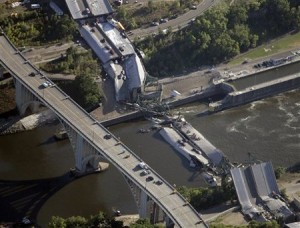
Kevin Anderson, a journalist for Al Jazeera-English, chatted with us via Skype today from Doha, Qatar.
Anderson started out as a newspaper journalist and gradually moved onto online journalism. He was BBC’s first online journalist outside of the U.K. and was also the Washington correspondent for the BBC website. In 2010, Anderson took what he calls a “leap of faith” and joined Al Jazeera-English.
“The work I‘m doing now is as exciting, if not more exciting, than the work I’ve done in the past,” Anderson said.
He believes that Al Jazeera-English is doing something that no other news organization has done before: covering the Middle East from the Middle East.
“In the past, the Middle East has been covered by the West, and the purpose [of Al Jazeera-English] is to cover the Middle East from the Middle East,” Anderson said. “It’s definitely coming with a radical point of view… and it’s a fascinating point of view. You’ll see things from Al Jazeera that you won’t see anywhere else.”
The current trend in journalism that Anderson is talking about allows people to be their own witnesses and tell their own stories. Anderson thinks that the trend in social media gives the voiceless a voice.
“We are just the beginning of a very fascinating, exciting time in history,” Anderson said. “We’re entering a fascinating time, and how we navigate that will be incredibly interesting, both as citizens and journalists.”
Aside from discussing his thoughts on journalism in the Middle East, Anderson provided tips for journalism students.
Advice #1: Take the initiative NOW.
“Set up a blog, start writing, start taking pictures, start doing multimedia storytelling,” Anderson said. “If you’ve got a mobile phone, just take pictures and capture sounds… It’s going to make that first job or that first internship so much easier because you can walk through that door and show that you didn’t wait to take the initiative.”
Advice #2: Audio is extremely important.
“It’s one of the things that people forget the most… people are pretty forgiving about shaky video these days… what they won’t forgive is sound.”
Remember, 70 % of video is audio.
Advice #3: Don’t forget to weave a story together.
Storify is amazing – it tells stories through pictures, Tweets and Facebook comments by the audience. However, journalists need to remember that they must help in making sense of the contributions from the audience.
“It is still important to have the narrative to weave the story together,” Anderson said.
Advice #4: Network journalism requires journalists to be social.
It is not enough to just build a website. Journalists must “make sure the content is available and take it to where people are congregating online,” according to Anderson.
Journalists are responsible for “using networks to find faces and add faces to journalism” and for “taking journalism to places where people are at online and engaging them on the sites.”
Advice #5: Look back and smile.
It is a tough time in journalism, but journalists must start somewhere, even if you end up at small papers, television stations and/or websites.
“You’ll look back on them [your past experiences] and think they were the best, most exciting times of your lives,” Anderson said. “Don’t work about where you start because it doesn’t determine where you’ll end up!”
 Al Jazeera English, the world’s first English-language news channel headquartered in the Middle East, has a young employee, Kevin Anderson. He Skyped with us in class today! :-)
Al Jazeera English, the world’s first English-language news channel headquartered in the Middle East, has a young employee, Kevin Anderson. He Skyped with us in class today! :-)






